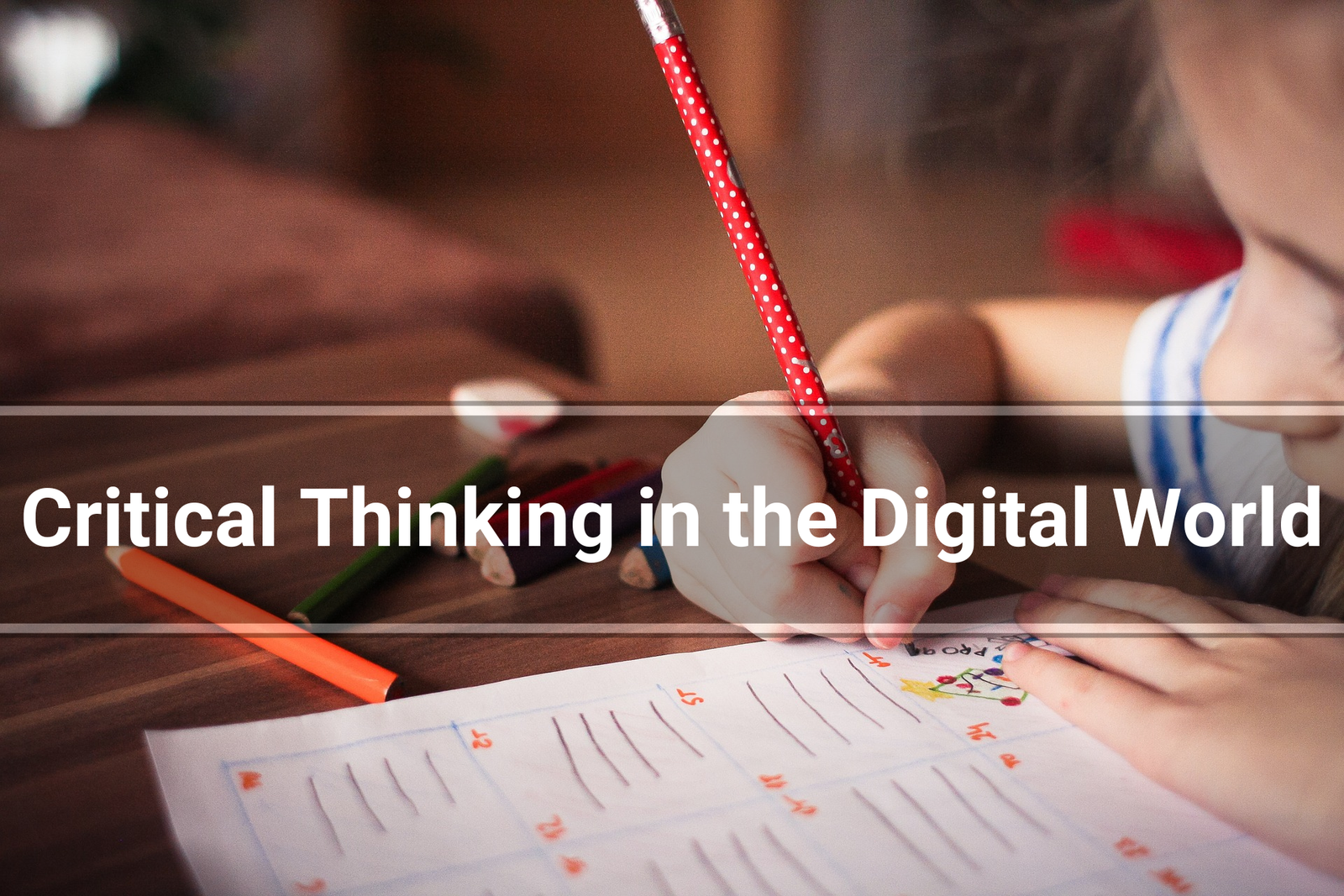In today’s rapidly evolving digital landscape, technology has become an integral part of everyday life, especially for children. From educational apps to social media platforms, digital tools permeate nearly every aspect of a child’s world, offering a plethora of opportunities and challenges that significantly impact their development. The seamless integration of technology into daily life has transformed the way children learn, play, and interact with each other. Whether it’s accessing information at the click of a button or connecting with friends across the globe, technology has redefined what it means to grow up in the modern era.
Understanding how technology affects young minds is crucial for parents, educators, and society as a whole. While these tools can foster creativity, enhance learning, and create new avenues for social interaction, they also bring about concerns regarding screen time, privacy, and digital dependency. The very nature of childhood is being reshaped by the constant presence of screens and digital interactions. It is vital for parents and educators to not only comprehend the benefits but also to be vigilant about the potential drawbacks, ensuring that technology serves as a positive force in children’s lives. As we continue to navigate this digital age, finding a balance that maximizes benefits while minimizing risks is essential for nurturing well-rounded, healthy individuals.
Understanding the Role of Technology in Modern Childhood
Technology is ubiquitous in the lives of modern children, woven seamlessly into their everyday experiences. From an early age, kids are exposed to a myriad of digital devices—tablets, smartphones, and computers—which serve as tools for learning, entertainment, and social interaction. These devices have become as commonplace as crayons and coloring books once were, reflecting a significant shift in how childhood unfolds in the digital age.
This immersion in technology shapes the way children perceive and interact with the world. Educational apps offer interactive and personalized learning experiences that cater to various learning styles, making education more engaging and accessible. Online games and virtual worlds provide children with imaginative outlets, enabling them to explore new scenarios and develop creative problem-solving skills. Social media platforms and messaging apps facilitate connections with peers, allowing children to build relationships beyond geographical boundaries.
However, this digital immersion also brings challenges. The constant connectivity and instant access to information can overwhelm young minds, potentially affecting their attention spans and cognitive development. As children grow accustomed to digital interactions, there is a risk of them missing out on essential face-to-face communication skills. Understanding the role of technology in modern childhood requires a delicate balance—embracing the benefits it offers while being mindful of the potential drawbacks that could hinder healthy development. It is crucial for caregivers and educators to guide children in navigating this digital landscape, ensuring that technology enhances rather than hinders their growth.
Overview of Technology’s Presence in Children’s Lives
Children today have unprecedented access to technology, living in a world where digital devices are as common as toys. Smartphones, tablets, and computers are staples in households, serving as gateways to an expansive universe of information and interaction. This technological landscape has fundamentally altered the way children experience their formative years.
Internet connectivity has opened up a vast realm of possibilities, transforming how children learn, communicate, and entertain themselves. For homework, they no longer solely rely on textbooks and handwritten notes; instead, they harness online resources, educational videos, and interactive platforms that make learning more dynamic and engaging. With just a few clicks, they can explore topics ranging from ancient history to cutting-edge science, broadening their horizons and encouraging curiosity.
Communication has also evolved, with children using technology to stay connected with family and friends. Text messages, video calls, and social media platforms enable them to maintain relationships regardless of distance. This connectivity offers a sense of belonging and community, as they share experiences and ideas in real-time.
Leisure time has been transformed by digital entertainment, with children having access to an endless array of games, movies, and music. These digital diversions are integrated into their daily routines, offering relaxation and enjoyment. However, the pervasive presence of technology also raises concerns about screen time and its potential impact on physical activity and social skills. Striking a balance between digital engagement and real-world interactions is crucial in ensuring that technology enriches rather than overshadows the richness of childhood experiences.
Why This Content Matters moment

The influence of technology on children’s lives is profound and multifaceted, percolating nearly every aspect of their diurnal gests . As digital natives, children are growing up in an period where technology is not just a tool but a abecedarian part of their terrain. This reality underscores the significance of understanding both the positive and negative goods of technology on youthful minds. Understanding its goods is essential for fostering positive development and mollifying implicit pitfalls. On one hand, technology provides inconceivable openings for literacy, creativity, and connection. It can inspire curiosity, enhance education, and offer new ways for children to express themselves. Yet, on the other hand, it also poses significant challenges, similar as digital reliance, exposure to unhappy content, and reduced face- to- face relations. These challenges bear a thoughtful approach to technology use that balances its benefits with aware caution.
As technology continues to evolve, so too must our approaches to integrating it into children’s lives responsibly. The rapid-fire pace of technological advancement means that new bias, apps, and platforms are constantly arising, each bringing its own set of possibilities and risks. Parents, preceptors, and policymakers need to stay informed and visionary, icing that children’s relations with technology are perfecting and safe. This involves setting boundaries around screen time, promoting digital knowledge, and encouraging critical thinking chops. By doing so, we can equip children to navigate the digital world with confidence and adaptability, preparing them for a future where technology will play an indeed more central part in their lives.
The Positive goods of Technology on Children
In the ultramodern age, technology is transubstantiating the way children learn and develop, offering myriad openings for growth and disquisition. It has come a important tool in the educational geography, furnishing coffers that were preliminarily unconceivable. With technology, children are no longer confined to the traditional classroom setting; they’ve access to a world of information at their fingertips, opening doors to new ideas and perspectives.
Enhancing Learning Through Educational Apps
Educational apps have revolutionized the way children learn, breaking down walls to education and making it more accessible and pleasurable. These interactive and engaging digital tools give substantiated learning gests that feed to individual requirements and preferences. With various plates, instigative robustness, and interactive challenges, they make complex subjects accessible and delightful, fostering a love for literacy.
Whether it’s mastering calculation, exploring wisdom, or learning a new language, educational apps give children with the occasion to learn at their own pace, enabling them to readdress grueling generalities until they’re understood. They also offer instant feedback, helping children fete miscalculations and learn from them in real- time. This immediate underpinning boosts confidence and encourages a growth mindset, where children understand that literacy is a trip filled with trial and error.
also, educational apps frequently incorporate rudiments of gamification, turning literacy into a sportful experience. By earning points, unleashing situations, and achieving mileposts, children stay motivated and engaged, viewing education as an instigative adventure rather than a chore. This sportful approach helps make adaptability and perseverance, chops that are inestimable both in academics and in life.
In a world where every child learns else, educational apps give the inflexibility demanded to accommodate different literacy styles, icing that no child is left before. By employing the power of technology, these apps are preparing children for a future where lifelong literacy is crucial to success, nurturing a curiosity that will drive them to seek knowledge throughout their lives.
The Negative goods of Technology on Children
While technology offers inconceivable benefits, it also presents challenges that can affect children in colorful ways. Understanding these implicit downsides is essential for icing that technology use is balanced and healthy.
Screen Time and Its Impact on Physical Health
Excessive screen time can have mischievous goods on children’s physical health, frequently manifesting in ways that are not incontinently egregious. When children spend too important time in front of defenses, whether it’s watching vids, playing games, or browsing the internet, they’re engaging in sedentary geste . This lack of physical exertion is a significant concern, as it can contribute to a range of health issues, including rotundity.
rotundity in children is not just about weight gain; it’s a complex issue that can lead to serious health problems latterly in life, similar as diabetes and cardiovascular complaint. also, the time spent hunkered over a device can lead to poor posture, performing in back, neck, and shoulder pain. These physical strains can hamper a child’s development and overall well- being, affecting their capability to engage in everyday conditioning comfortably.
Another aspect to consider is the impact on vision. gaping at defenses for extended ages can lead to digital eye strain, characterized by symptoms similar as headaches, blurred vision, and dry eyes. This discomfort can discourage children from engaging in conditioning that bear focus and attention, potentially impacting their academic performance and enjoyment of pursuits that do not involve defenses.
It’s pivotal for parents and caregivers to cover and regulate screen time to insure that it’s balanced with physical conditioning. Encouraging children to share in out-of-door play, sports, and other forms of exercise is essential for promoting a healthy life. Physical exertion not only helps combat the adverse goods of sedentary geste but also supports internal health, boosting mood and reducing anxiety and stress.
Creating a structured routine that includes regular breaks from defenses can help children develop healthier habits. Encouraging conditioning that don’t involve defenses, similar as reading, drawing, or playing with musketeers, can also give balance. By fostering an terrain that values physical exertion and limits screen time, parents can help insure that their children grow up healthy and well- rounded in this digital age.
Digital Dependency: Recognizing the Signs
In today’s hyper-connected world, digital dependency is becoming a significant concern, especially among children. With the allure of constant connectivity, the digital realm often feels like an irresistible pull, making it difficult for young minds to detach from their devices. As technology becomes more ingrained in daily life, it’s crucial to recognize the signs of digital dependency to help children maintain a healthy relationship with their screens.
One of the most noticeable signs of digital dependency is the compulsive use of devices. Children might find it challenging to put down their phones, tablets, or laptops, often choosing screen time over other activities. This compulsion can disrupt their ability to focus on schoolwork or engage in meaningful offline interactions with family and friends. The need to check notifications, messages, or social media updates can become an overwhelming habit, pulling them away from the present moment and their surroundings.
Another indicator of digital dependency is the loss of interest in activities that were once enjoyable. Children might neglect hobbies, sports, or outdoor play, preferring instead to spend time online. This shift can lead to a decrease in physical activity and social interaction, affecting both physical and mental health. When children become more invested in their digital worlds than the real one, it can lead to isolation and a lack of social skills development.
Emotional signs are also crucial to recognize. Children may become irritable or anxious when they are unable to access their devices, indicating a reliance on digital engagement for emotional satisfaction. This emotional dependency can be particularly concerning, as it suggests that children might be using technology as a coping mechanism for stress or boredom.
Addressing digital dependency requires a proactive approach. Open communication with children about the importance of balancing screen time with offline activities is essential. Parents and caregivers should set clear boundaries and establish rules for device usage, encouraging children to take regular breaks and engage in diverse activities. Introducing screen-free times or zones in the home can also help children learn to appreciate life without constant digital interaction.
Encouraging participation in offline activities, such as sports, arts, or family outings, can provide alternative sources of enjoyment and fulfillment. By fostering an environment where children feel supported and guided, parents can help their children develop a healthier relationship with technology, ensuring it remains a tool for growth rather than a source of dependency.
Critical Thinking in the Digital World

In our digital age, technology is not just a tool for entertainment and communication but also a powerful platform for developing critical thinking skills in children. With access to an expansive array of information at their fingertips, young learners are presented with opportunities to explore diverse perspectives, analyze complex issues, and develop informed opinions.
The internet offers a wealth of information, which can be both a blessing and a challenge. Encouraging children to navigate this digital landscape requires teaching them how to differentiate between credible sources and misinformation. By guiding children to question what they read and see online, parents and educators can help them cultivate a habit of critical inquiry. This practice not only sharpens their analytical skills but also empowers them to make well-informed decisions.
Moreover, digital tools such as educational apps, online games, and interactive platforms can be designed to stimulate problem-solving and critical thinking. These resources often present scenarios that require children to think creatively, evaluate different outcomes, and make decisions based on evidence and logic. For instance, puzzle games and simulation activities can teach children to strategize and adapt their thinking in real-time, promoting a deeper understanding of cause-and-effect relationships.
Encouraging children to engage in online discussions and debates can further enhance their critical thinking skills. Platforms that facilitate dialogue about current events, science, or ethical dilemmas provide opportunities for children to express their views and challenge their assumptions. By engaging with peers from various backgrounds, they learn to appreciate different perspectives and develop empathy and understanding, which are crucial components of critical thinking.
To support children in developing these skills, it’s important for parents and educators to model critical thinking behavior themselves. Discussing the decision-making process, weighing pros and cons, and exploring alternative viewpoints together can demonstrate how to approach complex problems thoughtfully. Additionally, creating a safe space for children to ask questions and express uncertainty can encourage them to explore their curiosity and build confidence in their ability to think critically.
By integrating technology thoughtfully into their lives, children can harness its potential to become discerning thinkers. As they learn to navigate the digital world with an analytical mindset, they gain valuable skills that will serve them well in all aspects of life, from academics to personal growth and beyond.
Balancing Technology Use in Children’s Lives
Establishing healthy screen time limits is a crucial aspect of maintaining a balanced lifestyle for children. In a world where screens are an integral part of daily life, it’s easy for children to become absorbed in their devices. Setting clear, reasonable boundaries helps ensure that technology use doesn’t overshadow other important activities. It’s important to create a family routine that incorporates technology in a balanced way, such as designating specific times for educational and recreational screen use while also promoting offline activities.
Encouraging children to engage in activities that don’t involve screens can be highly beneficial. Activities like outdoor play, reading books, or participating in hobbies can offer enriching experiences that technology alone cannot provide. By introducing these alternatives, children learn to appreciate a variety of activities, which supports their overall development and well-being.
Creating a structured schedule that includes time for physical activities, family interactions, and rest can help children develop healthy technology habits. For instance, setting aside time for exercise, family meals, and creative pursuits can make technology use feel like just one part of a well-rounded day rather than its central focus.
Involving children in the process of setting screen time limits can also be effective. Discussing the reasons behind these limits and allowing them to have a say in their technology routines can foster a sense of responsibility and understanding. When children understand the importance of balance and have a role in managing their screen time, they are more likely to adhere to the guidelines and make healthier choices on their own.
Ultimately, balancing technology use involves more than just setting limits; it’s about fostering a lifestyle where technology complements rather than dominates daily life. By modeling balanced behavior and promoting a diverse range of activities, parents and caregivers can help children develop a healthy relationship with technology that supports their growth and enriches their lives.
Parental Guidance in the Digital World
Navigating the digital world can be overwhelming for both children and parents, making parental guidance essential in shaping a healthy technology experience. Open communication is the cornerstone of effective digital parenting. By engaging in honest and ongoing conversations about technology use, parents can help children understand the benefits and potential pitfalls of their digital interactions. This dialogue not only builds trust but also allows parents to address concerns and set clear expectations.
Being actively involved in children’s technology use helps ensure that it remains a positive influence. This involvement doesn’t mean monitoring every click or keystroke but rather participating in their digital experiences in a meaningful way. For example, co-viewing online content, exploring educational apps together, or setting up family-friendly tech rules can foster a collaborative environment where technology is used constructively.
Establishing family tech norms is another effective strategy. Creating guidelines around screen time, social media use, and online behavior helps children develop a balanced approach to technology. These rules should be clear, consistent, and adaptable to the child’s age and developmental stage. Involving children in creating these rules can empower them to make better choices and understand the reasoning behind the guidelines.
Parental guidance also involves modeling healthy technology habits. Children often mirror the behavior of adults, so demonstrating balanced use of technology can reinforce the importance of moderation and mindfulness. For instance, setting aside tech-free times, such as during meals or family activities, encourages children to engage in face-to-face interactions and other enriching activities.
Furthermore, educating oneself about the latest digital trends and potential risks is crucial. As technology evolves, so do the challenges associated with it. By staying informed, parents can better navigate issues like online privacy, cyberbullying, and digital addiction, and provide relevant advice and support to their children.
In summary, parental guidance in the digital age is about fostering a positive and balanced approach to technology. Through open communication, active involvement, setting clear guidelines, modeling good behavior, and staying informed, parents can help their children navigate the digital world safely and responsibly, ensuring that technology serves as a tool for growth rather than a source of concern.
For more details visit our Technology section.









